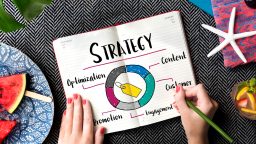When we think about dressing for success, the first thing that often comes to mind is the way clothing influences how others perceive us. However, the psychology of clothing is far deeper than just the image we project—it also affects how we see ourselves and how we perform in various situations. Whether we’re heading to an important meeting, attending a social event, or simply working from home, our clothing can significantly impact our mindset, confidence, and overall success.
- The Power of First Impressions
We’ve all heard the saying, „You never get a second chance to make a first impression.” It’s a cliché, but it’s also true. When we meet someone for the first time, our brains make quick judgments based on visual cues, and clothing is one of the first things we notice. Studies show that people are often judged by their attire within the first few seconds of meeting them, and this judgment can influence everything from professional opportunities to social connections.
Dressing appropriately for the occasion can immediately convey competence, reliability, and professionalism. For example, a well-tailored suit might suggest confidence and authority, while casual attire might communicate creativity and approachability. The key is to understand the context and dress in a way that aligns with the expectations of the environment.
- Clothing and Confidence
What we wear has a profound impact on our self-perception and self-esteem. This is often referred to as „enclothed cognition”—the idea that the clothes we wear influence our thoughts, feelings, and actions. A person who dresses in a manner that makes them feel empowered and comfortable is more likely to project confidence in their interactions.
For instance, a sharp outfit can boost your self-esteem and make you feel more competent. Conversely, if you’re wearing something that feels ill-fitting or uncomfortable, it can affect your mood and the way you carry yourself. The relationship between our clothing and our internal state is undeniable: the better we feel in what we wear, the better we perform.
- Clothing as a Tool for Identity Expression
Clothing is also a powerful tool for expressing our identity. What we wear can communicate our personality, values, and even our ambitions. People often use clothing to signal their belonging to certain social groups or subcultures. For example, a formal business suit might express professionalism and ambition, while casual, creative attire might signal a laid-back, artistic personality.
Moreover, the way we dress can change the way we feel about ourselves and how we relate to others. Wearing clothes that reflect our personality can give us a sense of authenticity and help us feel more comfortable in our own skin, contributing to a positive self-image.
- The Impact of Colour on Mood and Perception
The colours we choose to wear can have a subtle yet powerful effect on how we’re perceived and how we feel. Colour psychology suggests that different colours can evoke particular emotions and associations. For example, red is often associated with power, energy, and confidence, while blue tends to be linked with trustworthiness, calmness, and professionalism.
Wearing the right colour can enhance the impact of your outfit and convey specific messages. If you’re preparing for an important meeting or presentation, wearing a bold colour like red or navy can help project authority and confidence. On the other hand, softer tones like pastel colours may evoke a sense of approachability and warmth.
- Clothing for Performance: Dressing for the Role
The concept of „dressing for the role” goes beyond dressing for an occasion—it’s about dressing to match the mindset you need to perform well in a given task. The idea of „power dressing,” for example, is based on the notion that certain outfits help to instil a sense of control and influence. Wearing business attire for a meeting, or even just smart casual attire for a day of remote work, can help set the tone for your performance.
This idea also extends to athletes, actors, and other performers, who often use clothing as a way to get into the right mental state. In sports, for instance, athletes wear uniforms that not only represent their team but also mentally prepare them to take on the challenge. Similarly, a person going into a high-stakes presentation may dress in a way that aligns with the level of professionalism they wish to project.
- Clothing as a Comfort and Productivity Tool
While dressing for success is often associated with looking good, it’s equally important to consider the comfort aspect of your clothing. A study conducted by the Journal of Experimental Social Psychology found that people performed better on cognitive tasks when they wore clothing that made them feel comfortable and confident.
For remote workers, this might mean striking a balance between formal and casual clothing. Wearing clothes that allow you to feel at ease while still looking presentable can enhance focus and productivity. The key is to find attire that makes you feel confident without compromising comfort.
Conclusion
The psychology of clothing reveals that our choice of attire does far more than just influence the way others perceive us—it also shapes how we perceive ourselves and how we perform. From boosting our confidence to enhancing our productivity, the right clothing can provide a sense of empowerment and help us succeed in various aspects of our lives. Whether you’re dressing for a job interview, a meeting, or simply a day at home, remember that the clothes you wear are not just fabric—they are tools that can help shape your success.





